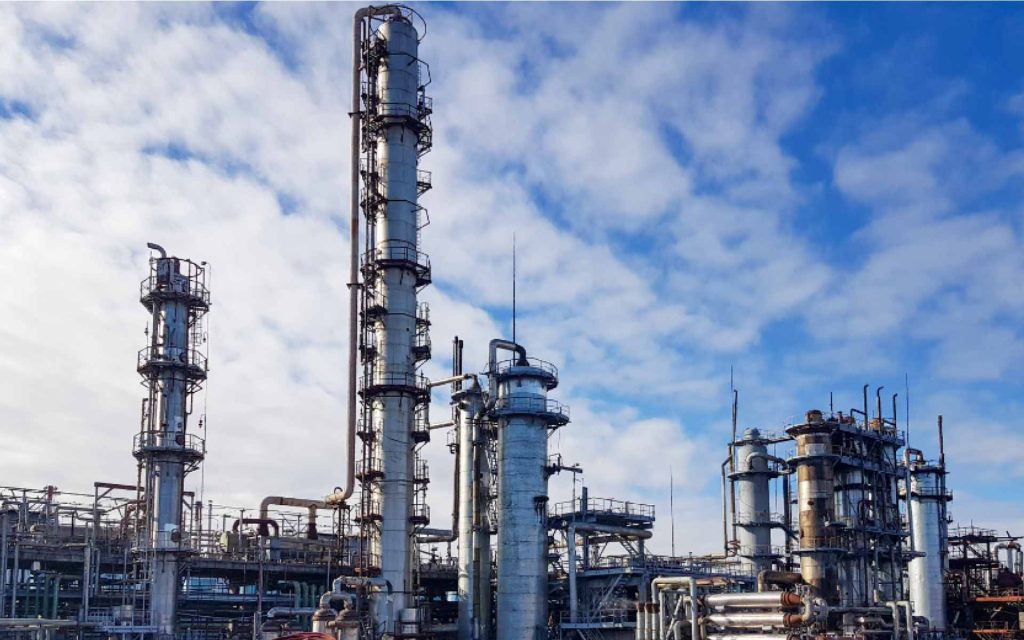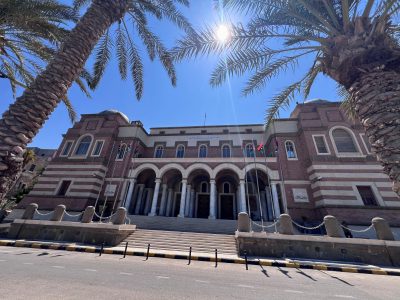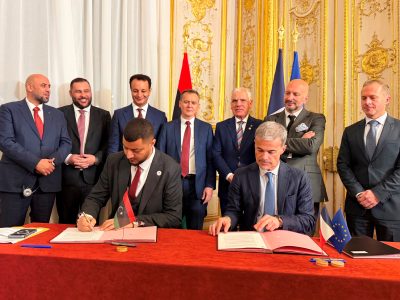Libyan Manufacturing: Driving Economic Recovery and Growth
In recent months Libya’s economy has shown tentative recovery, but its heavy reliance on oil and gas remains a vulnerability. As the World Bank notes, diversifying the economy and reducing dependence on hydrocarbons is a key medium-term challenge. In 2024, non-oil GDP actually grew by around 7.5%, highlighting the resilience of other sectors. These trends underscore a simple truth: reviving and modernizing manufacturing is essential for Libya’s long-term stability. A stronger industrial base can create jobs, cushion the economy against oil shocks, and foster lasting growth.
Libya’s industry sector is poised for rapid expansion. Forecasts show industrial output accelerating while agriculture and services grow more slowly. Analysts emphasize that manufacturing has the potential to drive economic growth, given the country’s abundant labor force and natural resources such as iron ore, limestone and gypsum. In Misrata, the manufacturing hub includes steel, plastics, food processing, and auto assembly – supported by the Misurata Free Zone’s tax incentives and port facilities. With GDP per capita at around $7,600, even modest industrial growth can deliver major social dividends while reducing import dependence.
Growth in Key Sectors
Cement and Construction Materials
Domestic cement plants have huge idle capacity. Libya’s annual cement capacity is about 21 Mt, but local plants produce only around 10 Mt. Demand has surged with reconstruction – by 2024 demand reached about 7 Mt per year while output remains far below that. The Libya Africa Investment Portfolio is reviving the long-dormant Misrata Cement Plant with China’s Sinoma–Wuhan, aiming for 2 Mt in the first phase and 4 Mt in the second. Expanding cement output could cut imports and support reconstruction.
Steel and Metals
Libyan steel output has recently hit record levels. In early 2025 the Libyan Iron and Steel Company announced combined production of 1.75 Mt from its three plants – slightly above design capacity. Growth plans are even more ambitious: Turkish firm Tosyalı has signed with the United Steel Company to build an 8.1 Mt-per-year direct-reduced-iron complex in Benghazi, billed as the world’s largest. Plans are also afoot to lift steel production to 4 Mt annually, reinforcing the industrial transformation.
Automotive and Heavy Machinery
Light vehicle assembly and machinery manufacturing are emerging. Foreign auto firms such as Toyota and Kia already assemble cars in Misrata, while government plans include local production of trucks and tractors with international partners. These ventures leverage Libya’s market access to Europe and Africa and its skilled labor, while reducing the need for imports.
Agro-Processing and Food Products
Libya’s farm sector is feeding industry growth. The government reports annual wheat production of about 1.4 Mt and aims to boost this by 500,000 t, especially in the south, to supply dozens of grain mills. Fertiliser and food processing capacity is also improving. The Libyan Fertilizer Company’s second urea plant has been restarted and now operates at about 80% capacity. Stronger local production stabilizes prices and encourages exports of processed dates, olives, and other crops.
Light Manufacturing
Traditional crafts and consumer goods industries have room for revival. The once-thriving textile complex in Bani Walid is being rehabilitated, though output is far below past levels. Egyptian investors are planning large-scale garment and upholstery production in Misrata and Benghazi, while Libyan delegations have visited Chinese textile clusters to explore joint ventures. Expanding light industry could replace some of the $700 million in annual textile imports.
Government Initiatives and Industrial Policy
The Libyan government has launched measures to jump-start manufacturing. In late 2024, Economic Minister Mohamed Al-Hwaij announced plans for 14 new industrial zones across the country. These zones are intended to cluster factories and provide shared utilities. Some zones will focus on energy-linked industries, others on port access or specialized manufacturing. The Ministry of Industry and Social Development Fund is also identifying idle state lands for private factories and aligning vocational training with industry needs.
Trade facilitation is improving through Libya’s membership in GAFTA and the AfCFTA, new border crossings with Tunisia, and streamlined tariff waivers. Tax incentives, long-term land leases and customs exemptions are offered to foreign investors. At a macro level, recent plans emphasize privatizing state firms and empowering the private sector, though state-owned enterprises still play a central role in recovery.
Energy Advantage for Industry
Libya’s energy abundance is a major strength for manufacturers. Electricity is extremely cheap – around $0.008 per kWh – making energy-intensive industries far more competitive. Libya also holds about 53 trillion cubic feet of natural gas reserves, which can supply petrochemicals or fuel for power generation. Capturing more gas and reducing flaring would enable industries such as ammonia, methanol, and glassmaking, giving manufacturers a sustained cost advantage.
Challenges Ahead
Security and political uncertainty remain the foremost risks. Investors cite militia influence, the lack of unified government, and election delays as major deterrents. Infrastructure gaps also persist, with unreliable power in some areas, poor transport links, and congested ports. Regulatory fragmentation, corruption and red tape discourage small businesses, while vocational training has lagged, leaving many industries short of skilled technicians.
Partnerships and Investment Flow
International partnerships are beginning to flow into Libyan industry. Turkish, Chinese and Egyptian firms are lining up projects, including Tosyalı’s steel investment and Chinese involvement in cement plants. Regional integration is also advancing, with North African investors eyeing Libya’s free zones. National funds like the Libya Africa Investment Portfolio are mobilizing capital for strategic industries, while local entrepreneurs in Misrata and other cities are reviving small workshops in consumer goods and machinery.
Banks have eased lending, and foreign oil and gas firms indirectly support manufacturing by contracting local services. These trends point to growing confidence that Libya’s non-oil growth story may finally be taking shape.




